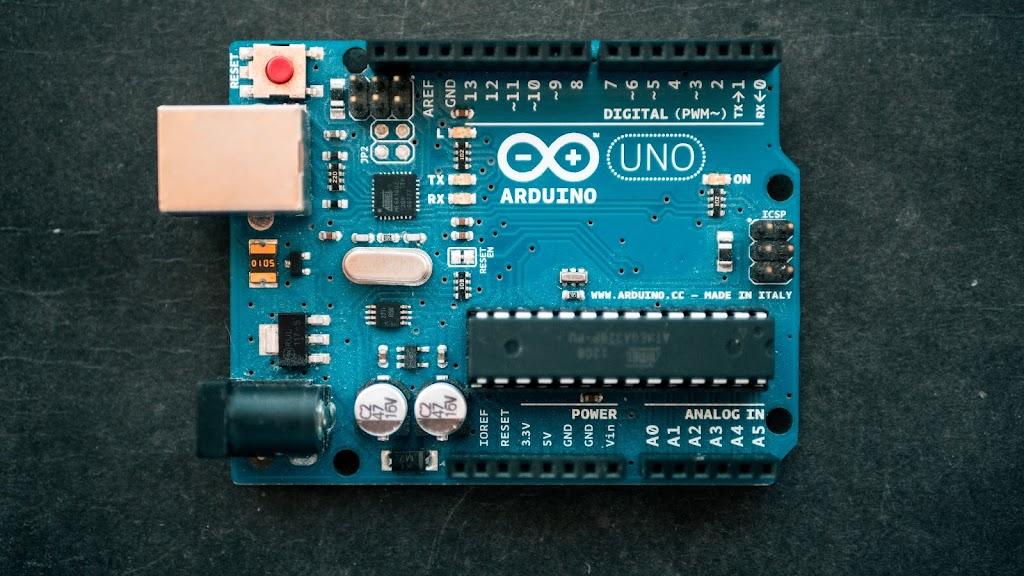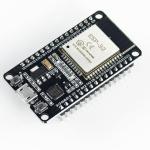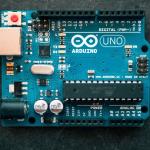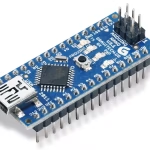If you are interested in learning about electronics and programming, you might have heard of Arduino. Arduino is an open-source platform that consists of hardware and software that can be used to create interactive projects. Arduino boards are microcontrollers that can read inputs from sensors, buttons, keyboards, etc. and control outputs such as LEDs, motors, speakers, etc.
Arduino also has an integrated development environment (IDE) that allows you to write code and upload it to your board. One of the most popular Arduino boards is the Arduino Uno. The Uno is a beginner-friendly board that has 14 digital input/output pins, 6 analog input pins, a USB connection, a power jack, a reset button and an ICSP header. The Uno can be powered by a USB cable or an external power supply. The Uno can communicate with your computer or other devices using serial communication protocols such as UART, SPI and I2C.
Arduino Uno is a popular and versatile microcontroller board that has gained popularity among hobbyists, students, and professionals alike. Developed by the Arduino company, the Arduino Uno serves as an excellent entry point into the world of embedded electronics and programming. In this post, we will explore the key features, components, and capabilities of the Arduino Uno, shedding light on its potential applications and advantages. Whether you’re a beginner looking to kickstart your journey in electronics or an experienced enthusiast seeking to expand your knowledge, the Arduino Uno offers a wealth of possibilities.
1. Overview and Key Features:
The Arduino Uno is based on the ATmega328P microcontroller, providing a powerful yet user-friendly platform for creating interactive projects. It boasts several key features that make it a go-to choice for electronics enthusiasts:
Microcontroller: The ATmega328P microcontroller at the heart of Arduino Uno offers 32KB of flash memory for program storage, 2KB of SRAM for data storage, and 1KB of EEPROM for non-volatile data storage.
Digital and Analog I/O: Arduino Uno provides a range of digital and analog input/output pins, making it easy to connect and interact with external sensors, actuators, and other devices. It offers 14 digital input/output pins (of which 6 can be used as PWM outputs) and 6 analog input pins.
Programmability: Arduino Uno is programmed using the Arduino IDE (Integrated Development Environment), which offers a simple and intuitive interface for writing and uploading code to the board. The programming language is based on C/C++, making it accessible for beginners and experienced programmers alike.
Communication: Arduino Uno supports various communication protocols, including UART (Universal Asynchronous Receiver-Transmitter), I2C (Inter-Integrated Circuit), and SPI (Serial Peripheral Interface). This enables seamless interaction with other devices such as sensors, displays, and wireless modules.
2. Board Layout and Components:
The Arduino Uno board features a compact design and includes several essential components that facilitate its functionality. The board consists of the following key elements:
Microcontroller: The ATmega328P microcontroller is situated at the center of the board, responsible for executing program instructions and handling input/output operations.
Power Supply: Arduino Uno can be powered via a USB connection or an external power source. It includes a voltage regulator that ensures a stable 5V supply to the board and connected components.
Digital and Analog Pins: The Arduino Uno board offers female header pins for connecting external devices. These pins are categorized into digital and analog input/output pins, each marked with corresponding labels for easy identification.
USB Interface: A USB connector is present on the board, allowing it to be connected to a computer for programming and communication purposes. It also serves as the power source when connected via USB.
Reset Button: A small tactile push-button is available on the board, labeled “Reset.” Pressing this button resets the microcontroller, restarting the program execution.
Crystal Oscillator: A crystal oscillator circuit provides precise timing for the microcontroller, ensuring accurate program execution.
3. Applications and Advantages:
Arduino Uno’s versatility and ease of use make it suitable for a wide range of applications:
Prototyping: Arduino Uno serves as an excellent platform for prototyping projects in various domains such as robotics, home automation, IoT (Internet of Things), and wearable technology. Its extensive library support and vast online community make it easy to find code examples and solutions for different applications.
Education: Arduino Uno is widely used in educational settings to teach electronics, programming, and physical computing. Its simplicity and affordability enable students to grasp fundamental concepts while providing a hands-on learning experience.
DIY Projects: Whether you’re building a weather station, a smart garden, or a remote-controlled car, Arduino Uno empowers DIY enthusiasts to bring their ideas to life. Its compatibility with a wide range of sensors, actuators, and modules allows for endless project possibilities.
Automation and Control: Arduino Uno can be used to automate various tasks and control systems. From controlling lights and appliances in your home to creating custom automation solutions for industrial applications, Arduino Uno offers a flexible and accessible solution.
Interactive Art and Installations: Artists and designers leverage Arduino Uno’s capabilities to create interactive installations, kinetic sculptures, and digital art projects. Its ability to sense and respond to external stimuli enables the creation of immersive and engaging experiences.







